X Email Mobile
| EXW Price: |
|
| Main Products: |
home supplies |
| Contacts: | Yang JuxianChat |
| Mobile: | 86-13516927842 |
| E-mail: | |
| WeChat: | yjx186718 |
| Address: | 18671 , 5 Street, 3 F, 45 Gate, International Trade Mart (District 2). |
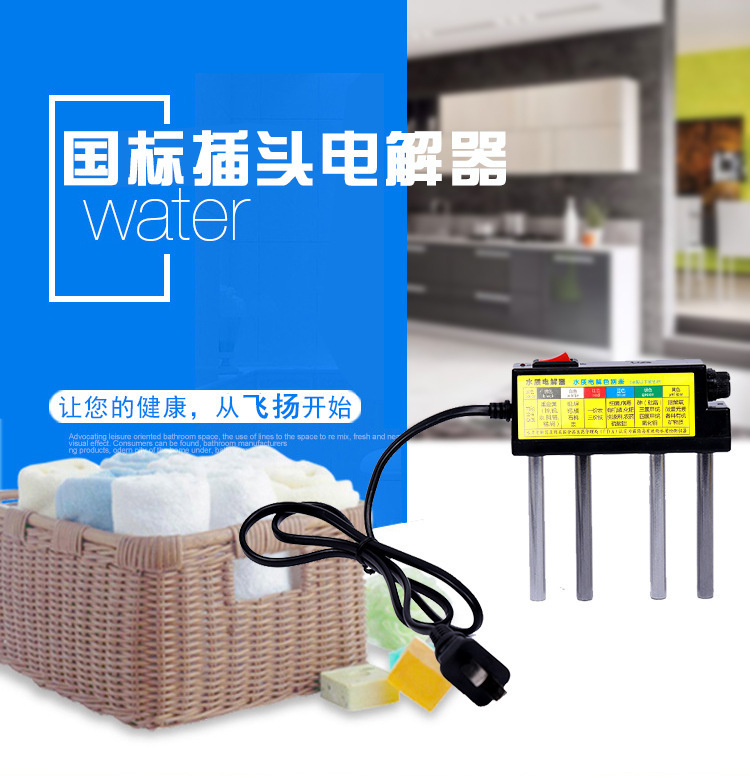
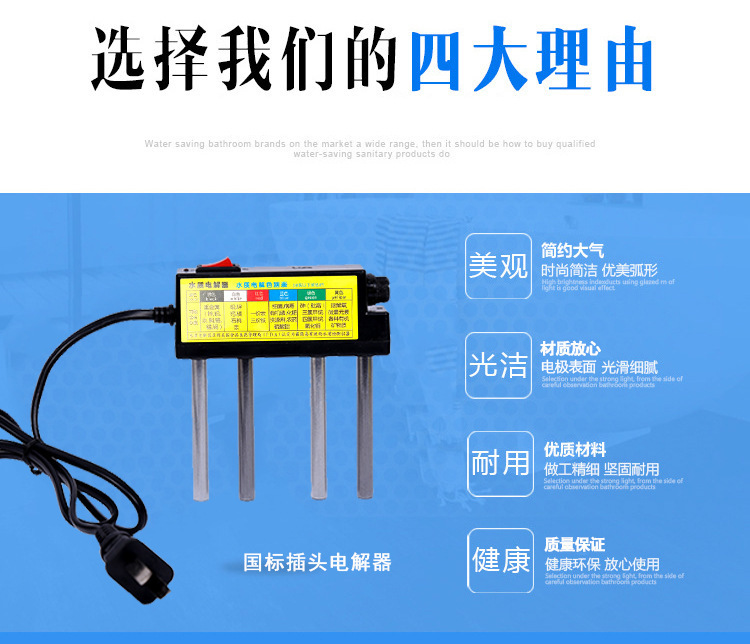
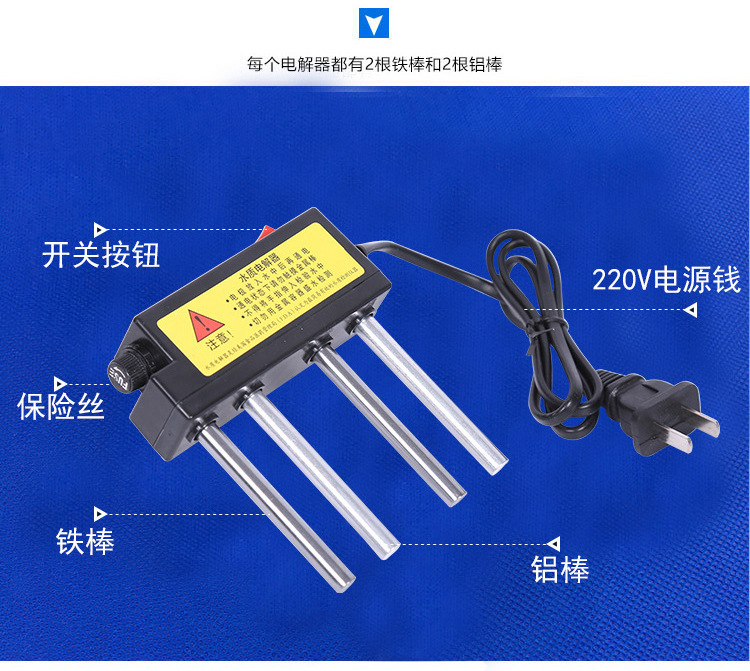
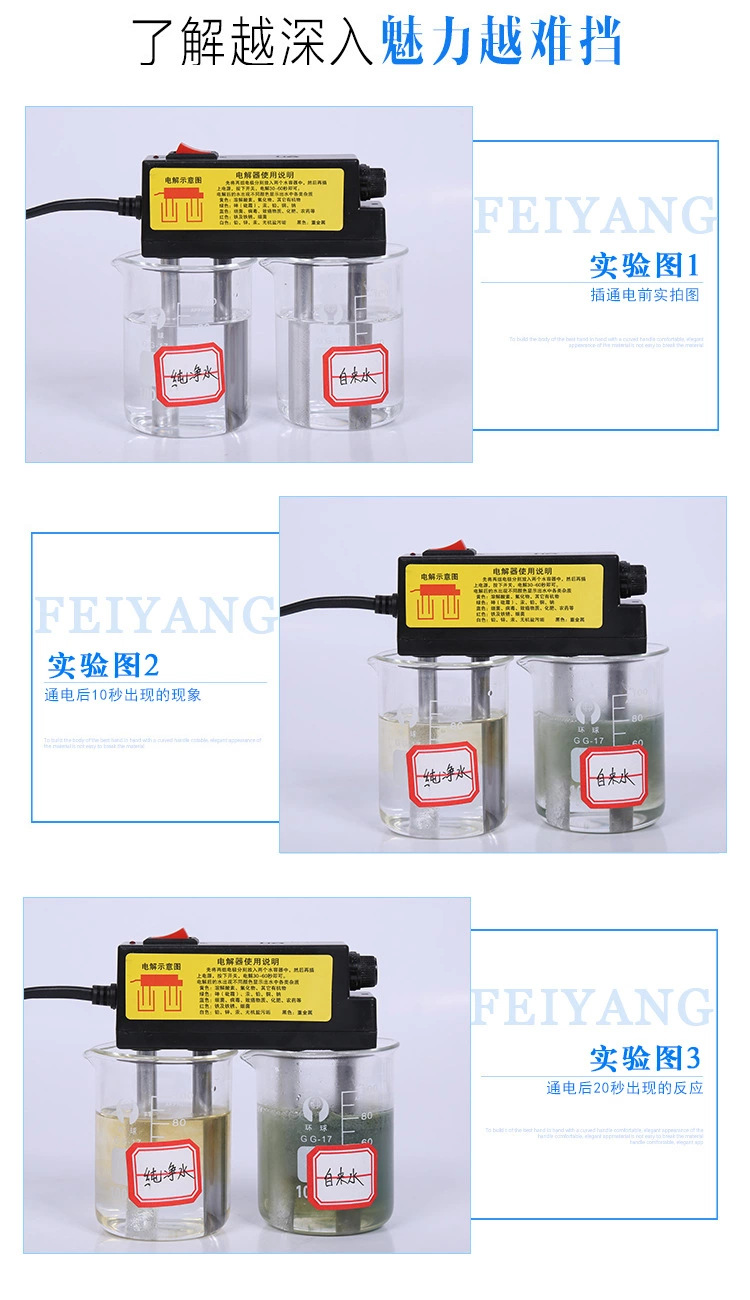
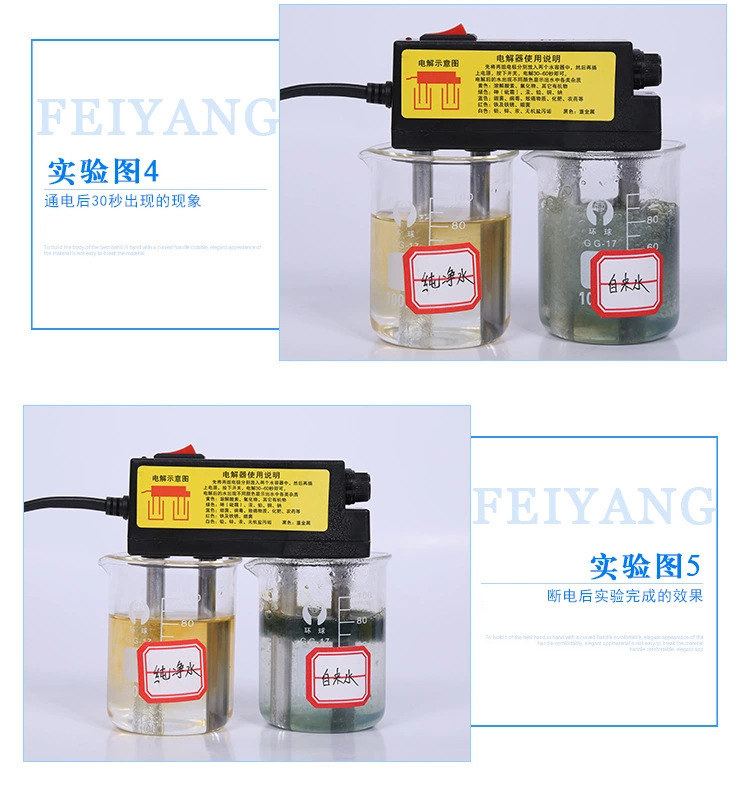
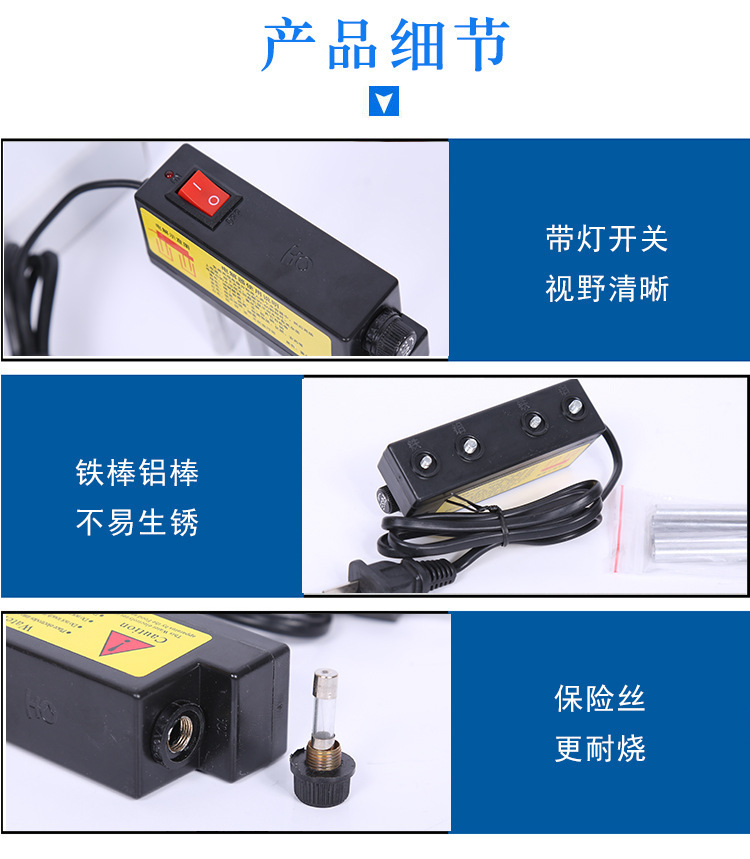
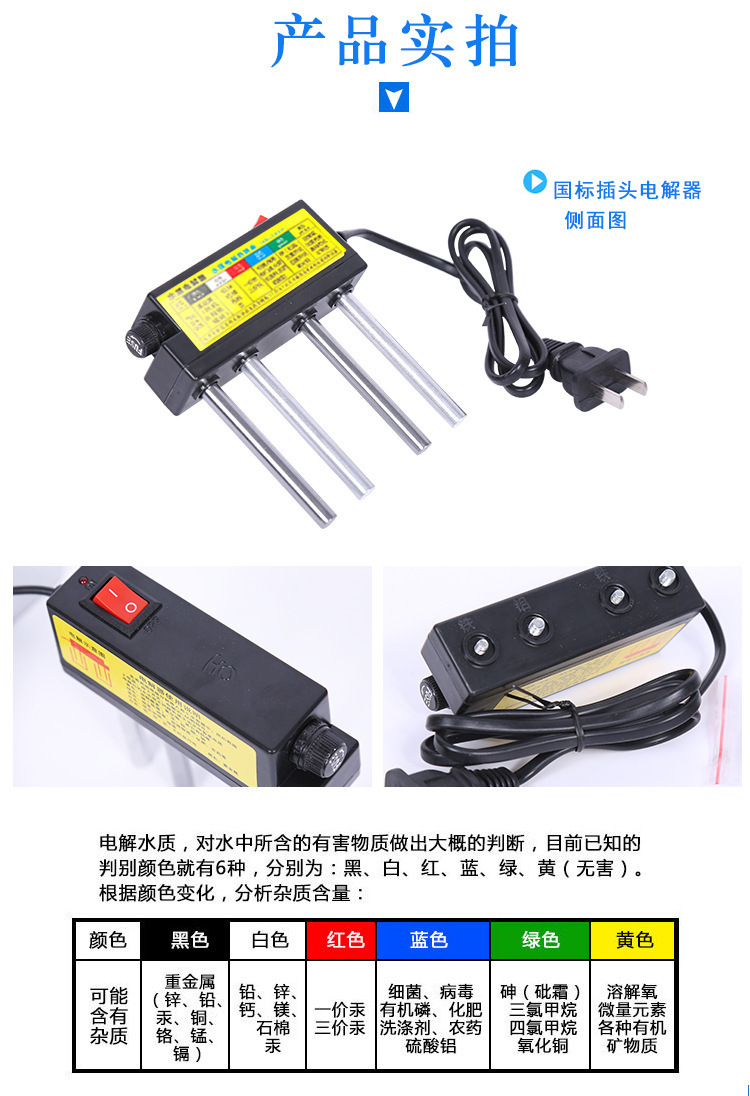
1, prepare for inspection water-- take two capacities100~150 ml white glass, one cup is connected with tap water, the other cup is connected RO machine water, side by side on the table.
2, prepare for inspection-- place electrolyser flat on the glass and insert220 volt power supply.
3, inspection-- press the power switch button on the electrolyser ON(Open) position, start inspection.
Generally, the inspection time is30 seconds. At the end, press the power switch OFF(Off) position, and finally take out electrolyser.
Security warning
after switching on the power supply, hands should not be held on the electrode; Fingers should not be put into the test water; Children should not be allowed to play electrolyser.
After electrolyser is used up, dry the electrode with dry cloth, wipe the water on the iron pole with fine gauze, and keep it properly.
Description
this instrument has electrolytic rods with positive and negative poles (one is iron rod and the other is aluminum rod), that is, two electrodes introduced by electric field. Electrolyser after power on, under the action of current, dissolve the positive value Fe3 + ions, they will have a negative valence with the water OH- ions combine to form water-insoluble Fe(OH)3 particles, these particles have strong coagulation and adsorption activity to colloidal particles in water, and thus form the adsorption and coagulation process to organic or inorganic substances in water.
At the same time, due to the effect of current, metal particles originally dissolved in water, such as manganese, potassium, cobalt, etc., are reduced and gradually gather to form metal groups. Due to the different color development of different metal ions, thus, color separation is generated.
Different colors appear in the water after electrolysis, showing various impurities in the water.
Water quality electrolysis instrument--
yellow: dissolved acids, silicon compounds, organic minerals, molybdenum, silicon, fluoride, other organic substances
green: arsenic, mercury, lead, copper, sodium
blue: bacteria, viruses, carcinogens, organic phosphorus, etc. (fertilizers, detergents and pesticides)
red: iron, rust and bacteria
white: lead, zinc, Mercury, inorganic salt dirt
black: heavy metals (zinc, lead, copper, chromium, manganese, cadmium)
criteria for measuring the quality of water
1, does not contain any substances that are harmful to human body and have peculiar smell (especially heavy metals and organic substances);
2, the hardness of water is moderate, usually50-200mg/L ( calcium carbonate);
3, PH the value is weakly alkaline (7.0-8.0);
4, the content and proportion of trace elements and minerals in water are moderate, which is similar to normal liquid;
5, the content of dissolved oxygen and carbon dioxide in water is moderate (dissolved oxygen in water≥ 6-7mg/L)
6. Water has strong nutritional and physiological functions (including solubility, penetration, diffusion, metabolic, emulsifying, clearing power, etc.).
TOP
Items have been added to the Inquiry Basket
There are items in the inquiry basket